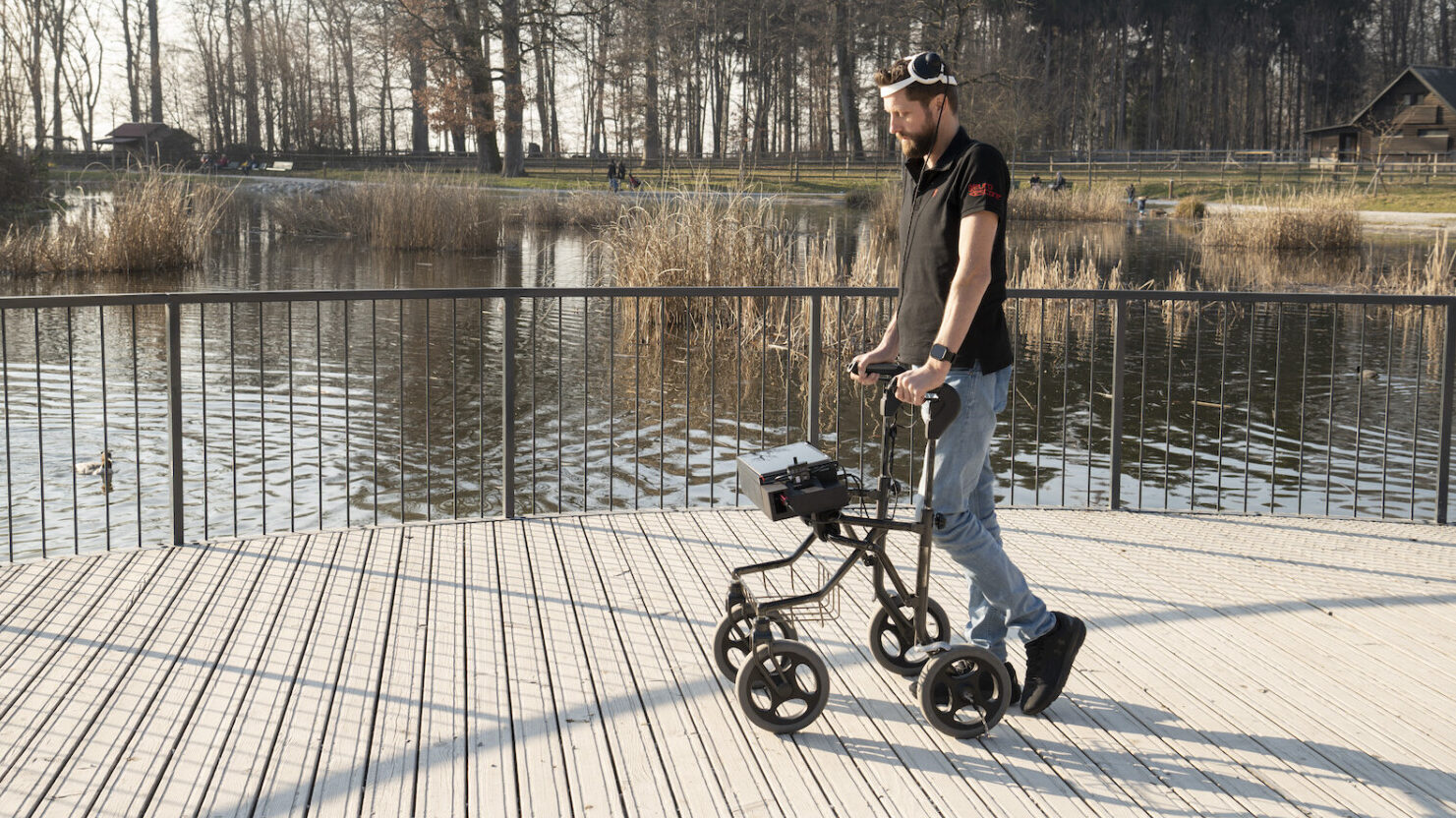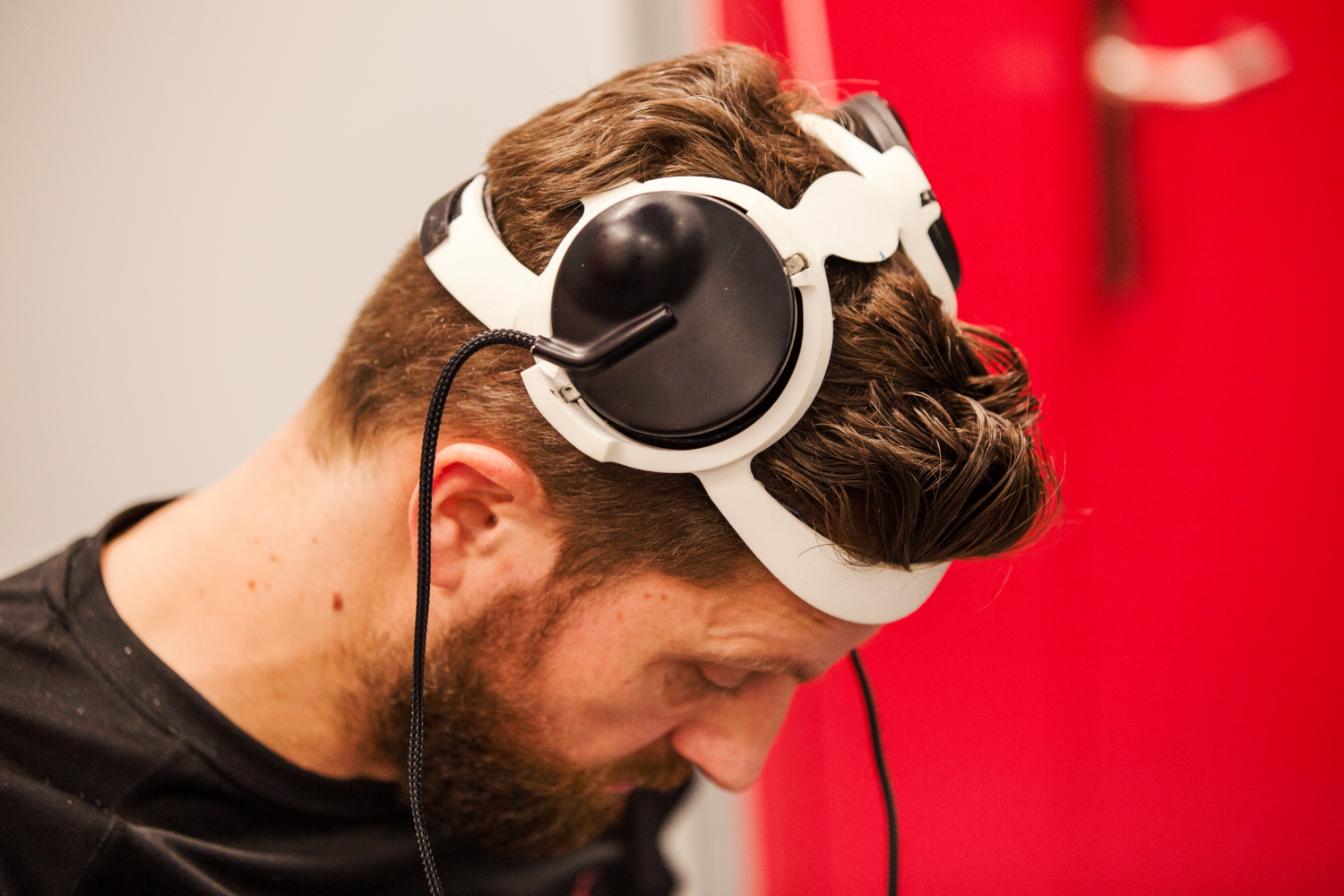Brain and spine implants enable man with paralysis to walk again

A motorcycle accident left Gert-Jan Oskam paralyzed in 2011, but now, he has regained some control of his lower body, thanks to new implants that restored the communication between his brain and the part of his spinal cord.
In a new study published this week in Nature, researchers in Switzerland explained that they believe their brain-spine interface (BSI) system works by transmitting Oskam’s thoughts from an implant in his brain to an implant in his spinal cord, allowing him to move his legs and feet simply by thinking.
“To walk, the brain delivers executive commands to the neurons located in the lumbosacral spinal cord,” they wrote. “Although the majority of spinal cord injuries do not directly damage these neurons, the disruption of descending pathways interrupts the brain-derived commands that are necessary for these neurons to produce walking.” The BSI creates a “digital bridge” between the two.
The study was published one year after Oskam received the implants, and the scientists report that the devices are still working, even when Oskam is using them on his own at home.
“The participant reports that the BSI enables natural control over the movements of his legs to stand, walk, climb stairs and even traverse complex terrains,” they wrote. In addition, using the BSI has improved his “neurological recovery.”
“The participant regained the ability to walk with crutches overground even when the BSI was switched off,” the study states.
Andrew Jackson, a neuroscientist who was not involved in the research, told the New York Times that the study “raises interesting questions about autonomy, and the source of commands.” He said that scientists wondered if connecting the brain to spinal cord stimulators could work for decades, but until now, no one has conducted a successful human trail with this type of technology.
“You’re continuing to blur the philosophical boundary between what’s the brain and what’s the technology,” Jackson said. “It’s easy to say, it’s much more difficult to do.”
CNN reported that Oskam can now walk about 330 feet, depending on the day, and even stand for a few minutes without using his hands.
“My wish was to walk again, and I believed it was possible,” he said at a press briefing, according to CNN. “I tried many things before, and now I have to learn how to walk normal again, like natural, because this is how the system works.”






